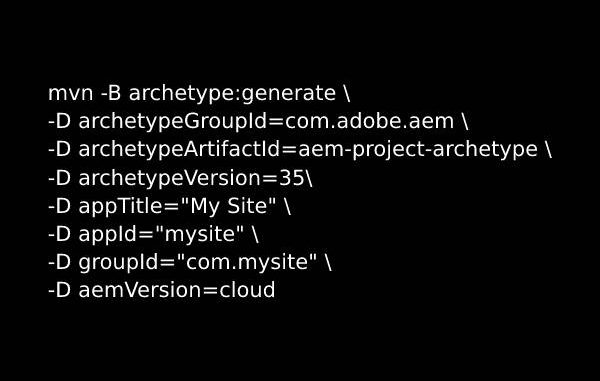
1. Prerequisites.
- Have access to an Adobe Experience Manager instance/jar. You will need aem 6.3 Service Pack 3, AEM 6.4 or AEM 6.5 or AEM Cloud.
- JAVA 11 (Recomended)
- Maven
2. Creating settings.xml file.
Look for the .m2 folder inside your user for your particular Operating System
- C:\Users\<YOUR-USERNAME>\.m2\settings.xml for Windows
- ~/.m2/settings.xml for Linux or Mac
If it is not there create settings.xml under the .m2 folder.
<settings
xmlns="https://maven.apache.org/SETTINGS/1.0.0"
xmlns:xsi="https://www.w3.org/2001/XMLSchema-instance" xsi:schemaLocation="https://maven.apache.org/SETTINGS/1.0.0
https://maven.apache.org/xsd/settings-1.0.0.xsd">
<profiles>
<!-- ====================================================== -->
<!-- A D O B E P U B L I C P R O F I L E -->
<!-- ====================================================== -->
<profile>
<id>adobe-public</id>
<activation>
<activeByDefault>true</activeByDefault>
</activation>
<properties>
<releaseRepository-Id>adobe-public-releases</releaseRepository-Id>
<releaseRepository-Name>Adobe Public Releases</releaseRepository-Name>
<releaseRepository-URL>https://repo.adobe.com/nexus/content/groups/public</releaseRepository-URL>
</properties>
<repositories>
<repository>
<id>adobe-public-releases</id>
<name>Adobe Public Repository</name>
<url>https://repo.adobe.com/nexus/content/groups/public</url>
<releases>
<enabled>true</enabled>
<updatePolicy>never</updatePolicy>
</releases>
<snapshots>
<enabled>false</enabled>
</snapshots>
</repository>
</repositories>
<pluginRepositories>
<pluginRepository>
<id>adobe-public-releases</id>
<name>Adobe Public Repository</name>
<url>https://repo.adobe.com/nexus/content/groups/public</url>
<releases>
<enabled>true</enabled>
<updatePolicy>never</updatePolicy>
</releases>
<snapshots>
<enabled>false</enabled>
</snapshots>
</pluginRepository>
</pluginRepositories>
</profile>
</profiles>
<activeProfiles>
<activeProfile>adobe-public</activeProfile>
</activeProfiles>
</settings>3. Create Your Project With Archetype.
Open your terminal and paste the command.
mvn -B archetype:generate \
-D archetypeGroupId=com.adobe.aem \
-D archetypeArtifactId=aem-project-archetype \
-D archetypeVersion=35\
-D appTitle="My Site" \
-D appId="mysite" \
-D groupId="com.mysite" \
-D aemVersion=cloud- Archetype Version (You can use latest version) Click Here For Latest Version.
-D archetypeVersion=35 - Title Of The Website.
-D appTitle="My Site" - Your project folder name.
-D appId="mysite" - Project Package Name
-D groupId="com.mysite" - Version of AEM
-D aemVersion=cloud
Or-D aemVersion=6.5.7(Or 6.3.0 Or 6.4.0)
4. Navigate To Your Project Folder.
$ cd mysite
5. Build The Package.
$ mvn clean install
or$ mvn clean install -PautoInstallPackage
** “autoInstallPackage” is a default maven profile included in pom.xml which will build and deploy your project to AEM running on localhost.
Happy Coding!
AEM Developer
Leave a Reply